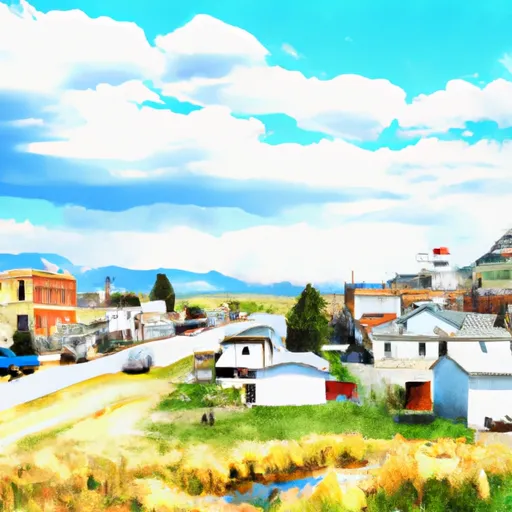-
 Snoflo Premium
Snoflo Premium
Get unlimited access to all our content
With no Ad interruptions! - Start Your Free Trial Login with existing account
Lustre
Eden Index
Climate
6.5
•
Recreation
•
Community
•
Safeguard
2.6/10

Lustre, Montana is a small community located in the northeastern part of the state. It experiences a continental climate with cold winters and warm summers. The average temperature in January, the coldest month, hovers around 14°F (-10°C), while in July, the hottest month, temperatures reach an average high of 85°F (29°C). Lustre receives a moderate amount of precipitation throughout the year, with an average of 12 inches (30 cm) annually.
Several hydrology constituents can be found in Lustre, including small creeks and rivers. The area is also home to numerous wetlands and marshes, providing habitat for a variety of aquatic species.
Outdoor recreation opportunities in Lustre are abundant. The surrounding landscapes offer opportunities for hiking, camping, and wildlife watching. The area is known for its excellent fishing, with various lakes and rivers nearby. Hunters can also enjoy game hunting in the surrounding wilderness during designated seasons. Lustre's natural beauty and diverse outdoor activities make it an attractive destination for nature enthusiasts and those seeking a peaceful retreat.
What is the Eden Index?
The Snoflo Eden Index serves as a comprehensive rating system for regions, evaluating their desirability through a holistic assessment of climate health, outdoor recreation opportunities, and natural disaster risk, acknowledging the profound impact of these factors on livability and well-being.
Climate Health Indicator (CHI): 6.5
Lustre receives approximately
319mm of rain per year,
with humidity levels near 72%
and air temperatures averaging around
6°C.
Lustre has a plant hardyness factor of
3, meaning
plants and agriculture in this region thrive during a short period during spring and early summer. Most
plants will die off during the colder winter months.
By considering the ideal temperature range, reliable water supplies, clean air, and stable seasonal rain or snowpacks, the Climate Health Indicator (CHI) underscores the significance of a healthy climate as the foundation for quality living.
A healthy climate is paramount for ensuring a high quality of life and livability in a region, fostering both physical well-being and environmental harmony. This can be characterized by ideal temperatures, reliable access to water supplies, clean air, and consistent seasonal rain or snowpacks.
Weather Forecast
Streamflow Conditions
Missouri-Poplar
Area Rivers
Missouri-Poplar
Snowpack Depths
Missouri-Poplar
Reservoir Storage Capacity
Missouri-Poplar
Groundwater Levels
Recreational Opportunity Index (ROI):
The Recreational Opportunity Index (ROI) recognizes the value of outdoor recreational options, such as parks, hiking trails, camping sites, and fishing spots, while acknowledging that climate plays a pivotal role in ensuring the comfort and consistency of these experiences.
Access to outdoor recreational opportunities, encompassing activities such as parks, hiking, camping, and fishing, is crucial for overall well-being, and the climate plays a pivotal role in enabling and enhancing these experiences, ensuring that individuals can engage in nature-based activities comfortably and consistently.
Camping Areas
| Campground | Campsites | Reservations | Toilets | Showers | Elevation |
|---|---|---|---|---|---|
| McGuire Creek - Lake Fort Peck | None | 2,570 ft |
Nearby Ski Areas
Catastrophe Safeguard Index (CSI):
The Catastrophe Safeguard Index (CSI) recognizes that natural disaster risk, encompassing floods, fires, hurricanes, and tornadoes, can drastically affect safety and the overall appeal of an area.
The level of natural disaster risk in a region significantly affects safety and the overall livability, with climate change amplifying these risks by potentially increasing the frequency and intensity of events like floods, fires, hurricanes, and tornadoes, thereby posing substantial challenges to community resilience and well-being.
Community Resilience Indicator (CRI):
The Community Resilience Indicator (CRI) recognizes that education, healthcare, and socioeconomics are crucial to the well-being of a region. The CRI acknowledges the profound impact of these elements on residents' overall quality of life. By evaluating educational resources, healthcare accessibility, and economic inclusivity, the index captures the essential aspects that contribute to a thriving community, fostering resident satisfaction, equity, and social cohesion.

